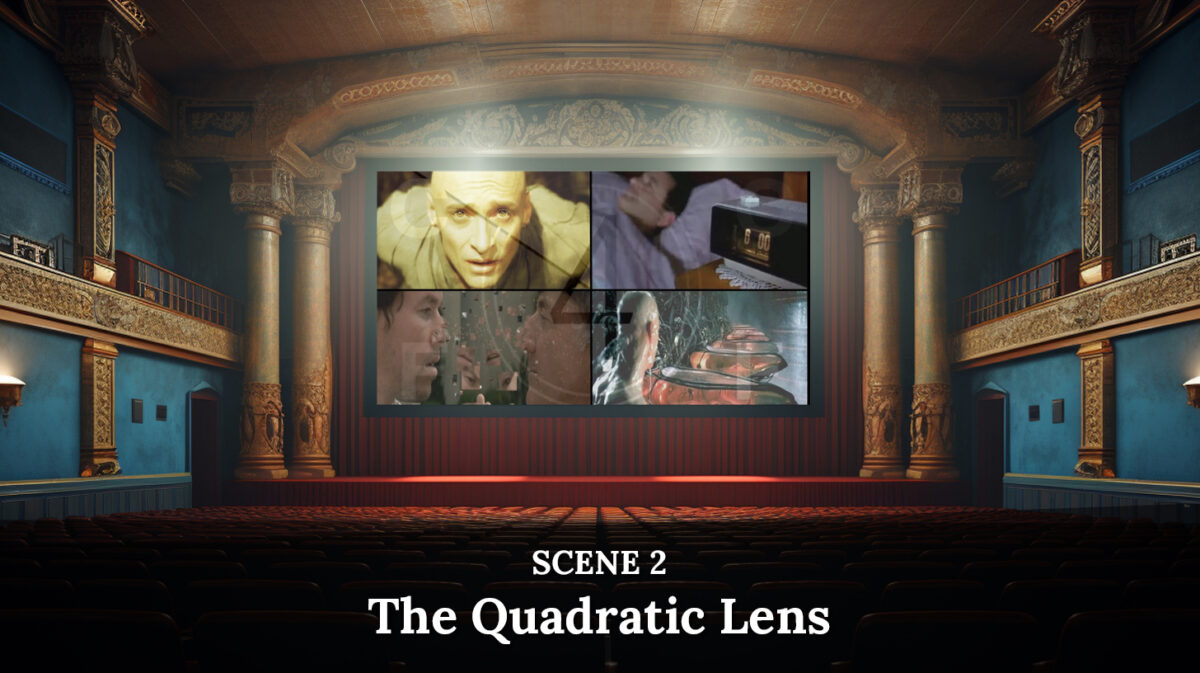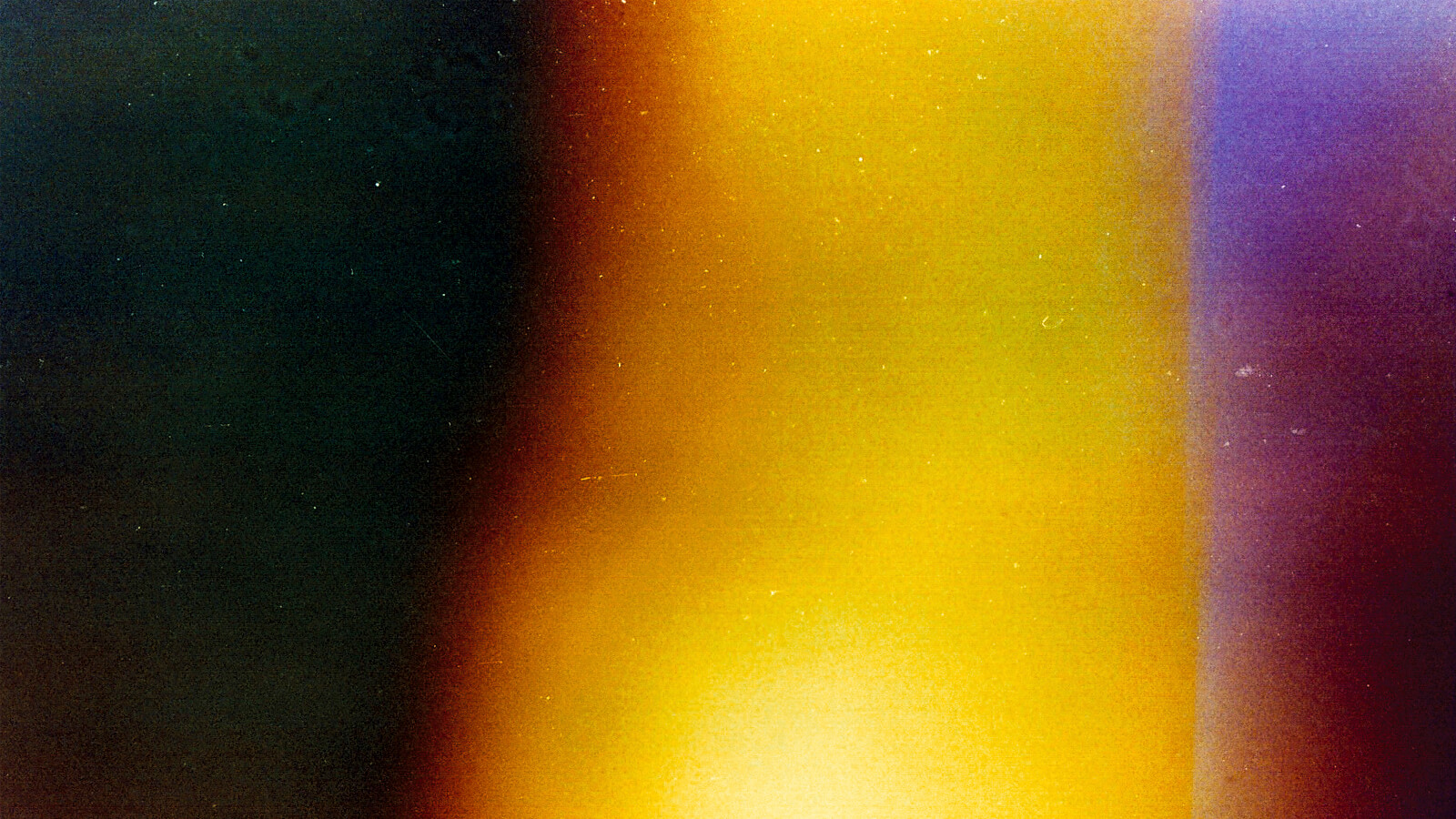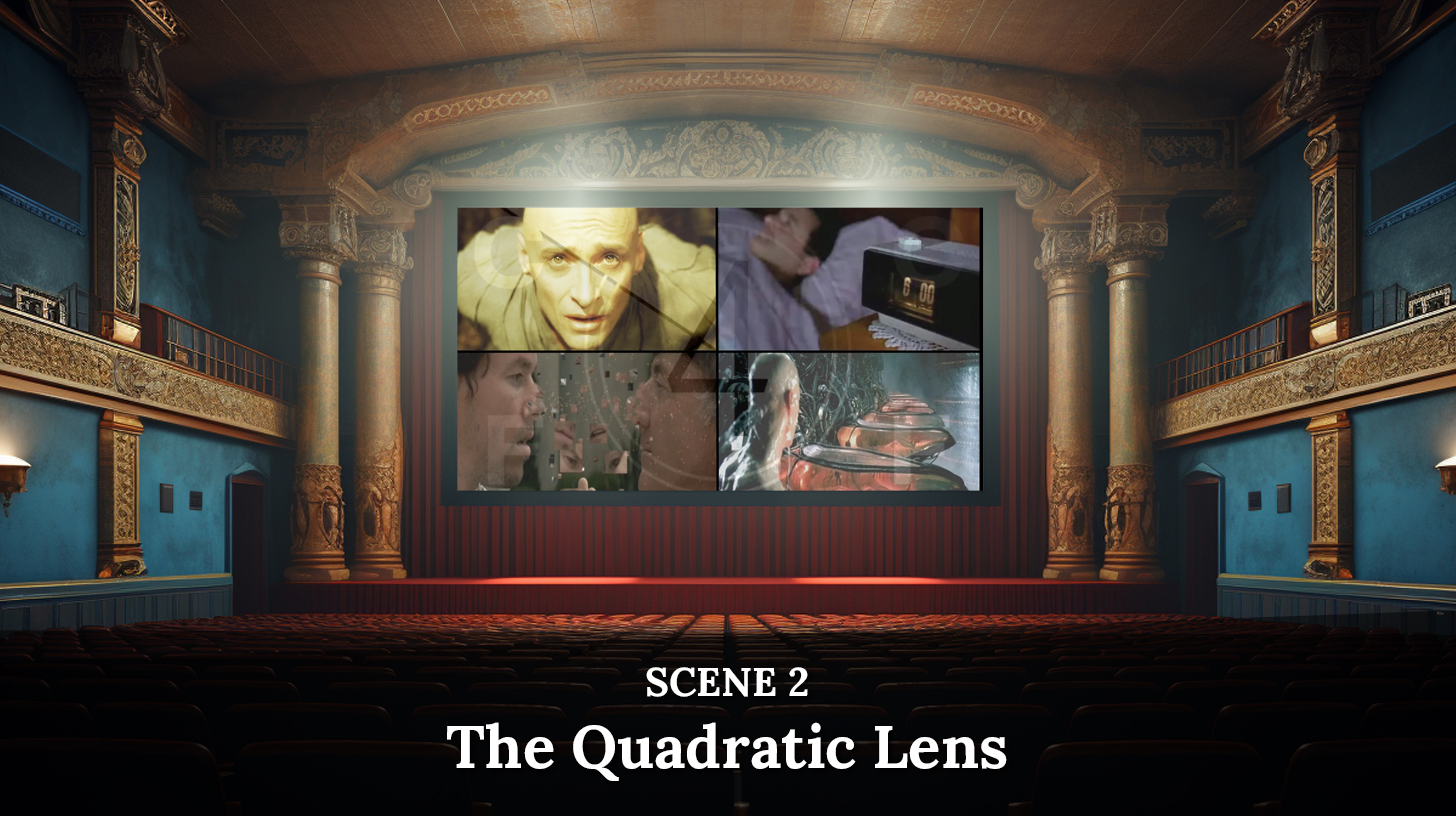
The first Integral lens we explored was the HOLONIC LENS. This time we explore the QUADRATIC LENS. This lens helps us look upon everything we perceive as being made up of four distinct yet equal and interrelated essential dimensions of perceptual reality. These dimension-perspectives can be labeled in various ways to represent the form of existence we are looking at.
For example, when looking at ourselves and any other sentient being (sentient holon) through the quadratic lens, we can see that we have four essential dimensions or QUADRANTS of existence: Experiential/intentional, physiological/behavioral, relational/cultural, and environmental/social.
The experiential/intentional aspect of our being is our individual-interior subjective dimension which includes our thoughts and emotions. The physiological/behavioral aspect of our being is our individual-exterior objective dimension that includes our physical reality and our physical actions and behavior patterns. When two or more of us get together, we experience a collective-interior intersubjective dimension of shared and/or conflicting relational and cultural ways of being and perceiving. We also co-exist within a greater field of social and environmental systems which is the collective-exterior interobjective dimension of our existence. These four dimensions are reflected through our languages in the form of first-person (I or me), second-person (you and I or WE), third-person (IT), and third-person plural (ITS) linguistic patterns.
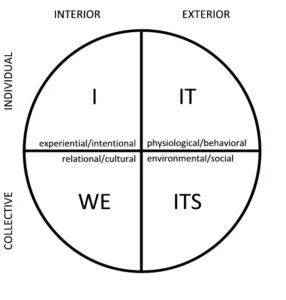
The Quadrants or Quadratic Dimensions of our Being in the World
As sentient beings with these four quadrants or dimensions of existence, we also tend to project these dimensions as perspectives or lenses through which we view the world. As we move through the world we naturally shift between these four lenses of perception, alternately focusing on our inner thoughts and feelings, on our interactions with others, on physical actions and behavior patterns, and on our environment.
When we use the quadratic lens to look at sentient aspects of existence we are able to see all these quadrants or dimensions of sentient reality, and when we use the quadratic lens to look through the quadrants at non-sentient aspects of existence we create a quadratic vision that gives us a more comprehensive perspective on our inner and outer individual and collective realities. Together, the dimension-perspectives of looking at and looking through the quadrants make up what I am calling the quadratic lens.
Using the quadratic lens in the cinematic arts, we can see that screen characters, as recreations of sentient beings, should have all four quadrants or dimensions of being (psychological, behavioral, relational, and environmental) for them to be perceived as realistic and believable. While the term “three-dimensional characters” is often used to refer to realistic and believable onscreen characterizations, if we look closely at the various character and acting theories and practices, such as those of master theorist Constantine Stanislavski (1989), we discover that what we are really talking about are “four-dimensional characters” that fully embody the four-dimensions of psychological, behavioral, relational, and environmental existence.
These four-dimensional (quadratic) characters live and move within a cinematic world, interacting with other sentient character-beings and non-sentient forms (tables, chairs, rooms, cars, etc.), and cinematic artists naturally attempt to visually capture this moving reality through a cinematic “shot coverage” quadratic lens consisting of: A character close-up or POV shot (subjective lens), a medium-shot or two-shot focusing on character interactions (intersubjective lens), a close-up or insert of physical objects and actions (objective lens), and a master- or wide-shot of the whole process and environment surrounding the situation/event (interobjective lens).

The Cinematic Shot Coverage Quadradic Lens
Each kind of shot is often correlated with the actual camera lenses’ focal length used to capture each type of shot (wide angle lens for the wide shot; normal lens for the medium shot; telephoto, close-up, and/or macro lenses for close-up shots). A cinematic artist can also play with this configuration to create various dramatic and visual effect; for example, a telephoto lens can be used for a wide shot by placing the camera far away from the subject, thereby flattening the space within the frame and creating a wide shot with limited depth. Sometimes two or more perceptual lenses can be combined in one cinematic shot. The classic example of this is the zoom, going from close-up to wide-shot or vice-versa.
Each kind of shot is often correlated with the actual camera lenses’ focal length used to capture each type of shot (wide angle lens for the wide shot; normal lens for the medium shot; telephoto, close-up, and/or macro lenses for close-up shots). A cinematic artist can also play with this configuration to create various dramatic and visual effect; for example, a telephoto lens can be used for a wide shot by placing the camera far away from the subject, thereby flattening the space within the frame and creating a wide shot with limited depth. Sometimes two or more perceptual lenses can be combined in one cinematic shot. The classic example of this is the zoom, going from close-up to wide-shot or vice-versa.
These four categories of shots or visual framings, when used separately or in combination, represent one way in which the four different lenses of perception that make of the quadratic lens are expressed through the visual field of a cinematic work. Additional modes of visual expression that can and are often used to express these various lenses of perception include the expressive use of visual effects, visual archetypes and symbols, and the basic visual elements within the frame, such as light, tone, color, space, shapes, movement, and rhythm. The four perspectives of the quadratic lens are also expressed through a cinematic work’s text (themes, characters, story, and setting) and sound (music, dialogue, sound effects, and background sounds).
Ideally, the shot coverage quadratic lens, along with the other corresponding visual, auditory, and textual lenses, are used in unison by cinematic artists to create an evolving pattern of perception for the audience to look through and into the cinematic reality, much like how we normally perceive our everyday world through one of our natural four perceptual lenses in any given moment. In this way the cinematic artist attempts to create an ebb and flow of perspectival fields that resonates with our natural way of perceiving in a cinematic work’s text, images, and sounds as they unfold through time – a location or setting is established, such as a large open field in the middle of the country on a sunny clear afternoon, we hear birds singing, and in the distance we see two characters standing and facing each other (interobjective lens); our attention is drawn to the space and dialogue between these two characters (intersubjective lens); then we move in close to one of the characters to see and hear how they are reacting (subjective lens); and then our attention is drawn to one of the characters’ hands holding something behind their back (objective lens).
One of the challenges of creating involving and immersive cinematic works is for the cinematic artist to match the natural alternating flow between these inherent shifts in our focus of attention. The cinematic artist can also establish a new pattern of attention shifting or playing against the natural shift for a desired effect as well. Many cinematic artists try to cover every scene from all four dimension-perspectives, giving them the capacity to play with these alternate perceptual patterns in the editing room.
When a cinematic work achieves a natural or well-designed shifting of dimension-perspectives synchronized across text, image, and sound, the viewer becomes more immersed in the unfolding cinematic reality. This evolving synchronization of the quadratic lens with the text, image, and sound of a cinematic work can also be made richer and more complex through the use of various advanced narrative, visual, and auditory techniques to more fully express and integrate the internal (subjective and intersubjective) and external (objective and interobjective) dimension-perspectives.

The Fountain (2006) and the Concretion of the Subjective Lens.
For example, in addition to using character close-ups and POV (Point-Of-View) shots and various other visual, auditory, and textual subjective approaches, the subjective lens can be made more concrete by using visual and audio effects like those used in the above shot from The Fountain (2006), in which we are given a concrete or externalized audiovisual expression of the character’s transformational subjective internal experience.

I Heart Huckabees (2004) and the Concretion of the Intersubjective Lens
Intersubjective realities can also be given concrete cinematic expression in this same way, as in the above shot from I Heart Huckabees (2004) in which the intersubjective internal WE-space between the two characters is given concrete and externalized expression as fragments of each character’s beingness floats between them.
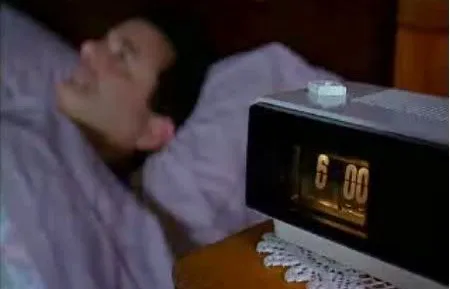
Groundhog Day (1993) and the Integration of Subjective and Objective Realities
In the realm of integrating internal and external realities, relationships between character’s internal realities and the external realities around them can be established and used for dramatic effect by integrating various internal (subjective and intersubjective) and external (objective and interobjective) textual, visual, and auditory lenses of perception. For example, the classic intersubjective two-shot structure can be used cross-dimensionally by placing a character or characters on one side of the frame and an object form on the other side of the frame, as in the shot above from Groundhog Day (1993), in which a two-shot between Phil, the main character, and his bedside clock, emotionally amplifies the relationship between him and the temporal external reality loop he finds himself caught in.
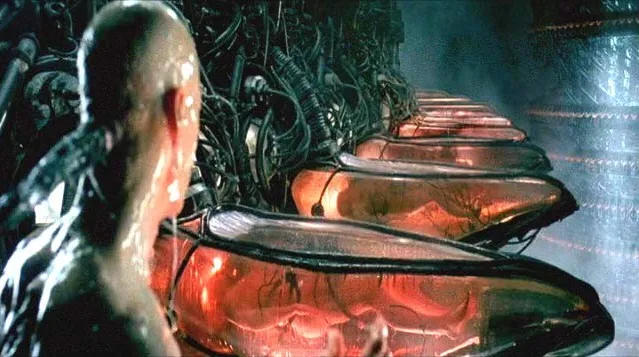
The Matrix (1999) and the Integration of Subjective and Interobjective Realities
This cinematic integration of internal and external dimension-perspectives can also be used to heighten dramatic moments and bridge the gap between a character or characters and their greater environment or interobjective reality. For example, in the shot above from The Matrix (1999), Neo, the main character, wakes up from the matrix and rises up out of the pod that has been his body’s prison, and a cinematic shift from internal to external dimension-perspectives heightens the realization of the depth of his situation as Neo and we, the audience, suddenly witness the endless field of pods in his surrounding interobjective environment.
These advanced techniques for the integration of the internal and external dimension-perspectives of the quadratic lens can be found in many cinematic works, but are especially dominant in integrally-informed cinematic works such as those used in the above examples. The extensive usage of these advanced integration approaches in integrally-informed cinematic works also appears to be part of what may be a highly developed capacity among integral cinematic artists to use the quadratic lens in a more balanced, integrated, and masterful way.
In essence, the quadratic lens in the cinematic arts acts as a perceptual bridge or gateway between the quadratic dimensional-perspectival realities of the cinematic artist, the cinematic work, and the viewer. A poor use of this lens produces a mismatch and dissonance between the cinematic works’ and the viewer’s perceptual field, reducing viewer attention, involvement, and immersion in the cinematic work. Skilled use of this lens can create a seamless, powerful, and more immersive cinematic experience. Masterful use of this lens can assist the cinematic artist in more fully expressing their vision, while opening the viewer to more subtle and profound dimensions of a cinematic work, and potentially stimulating new and transformative ways of perceiving themselves and the world around them.
 |
|
 |
 |
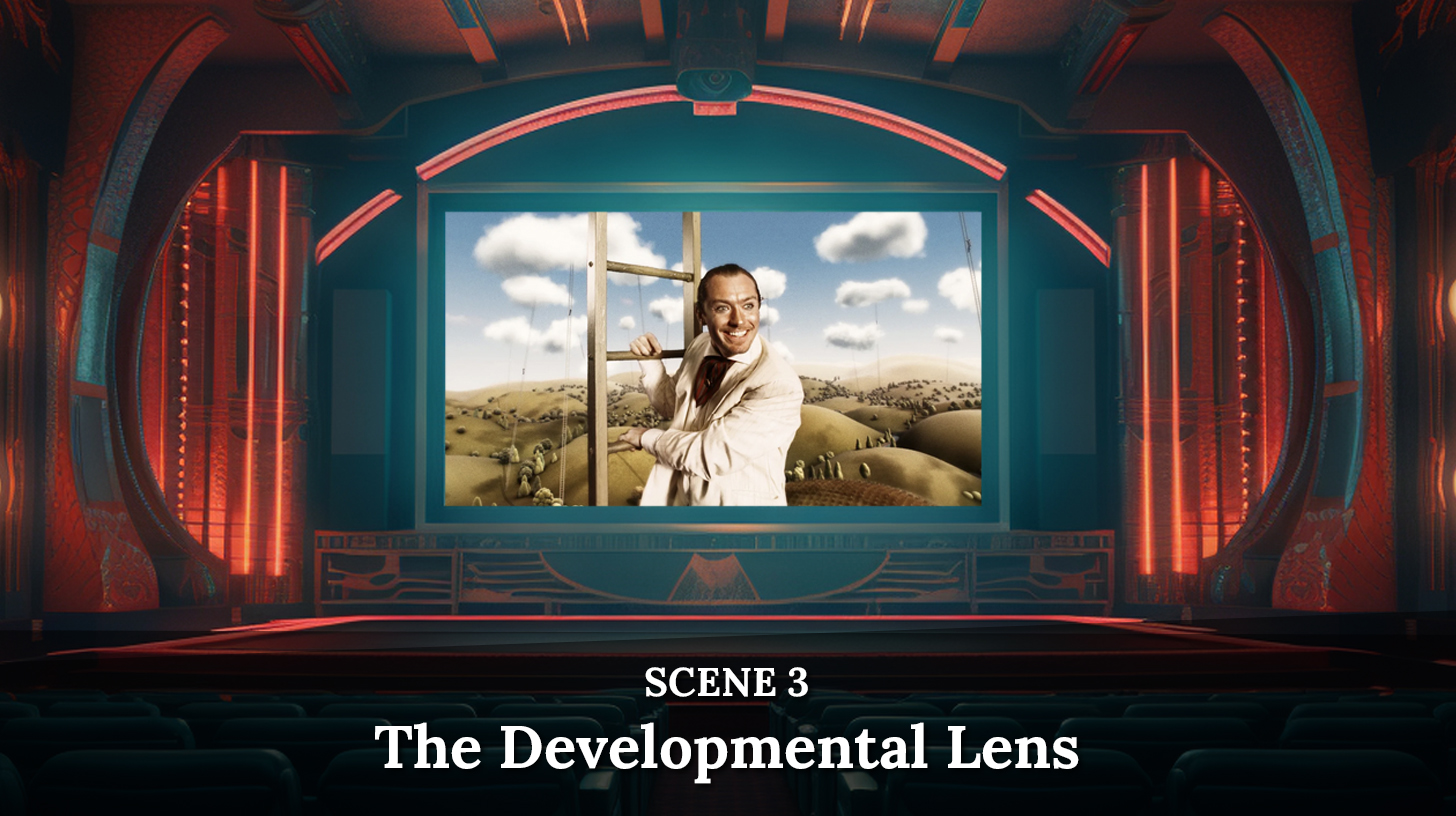 |
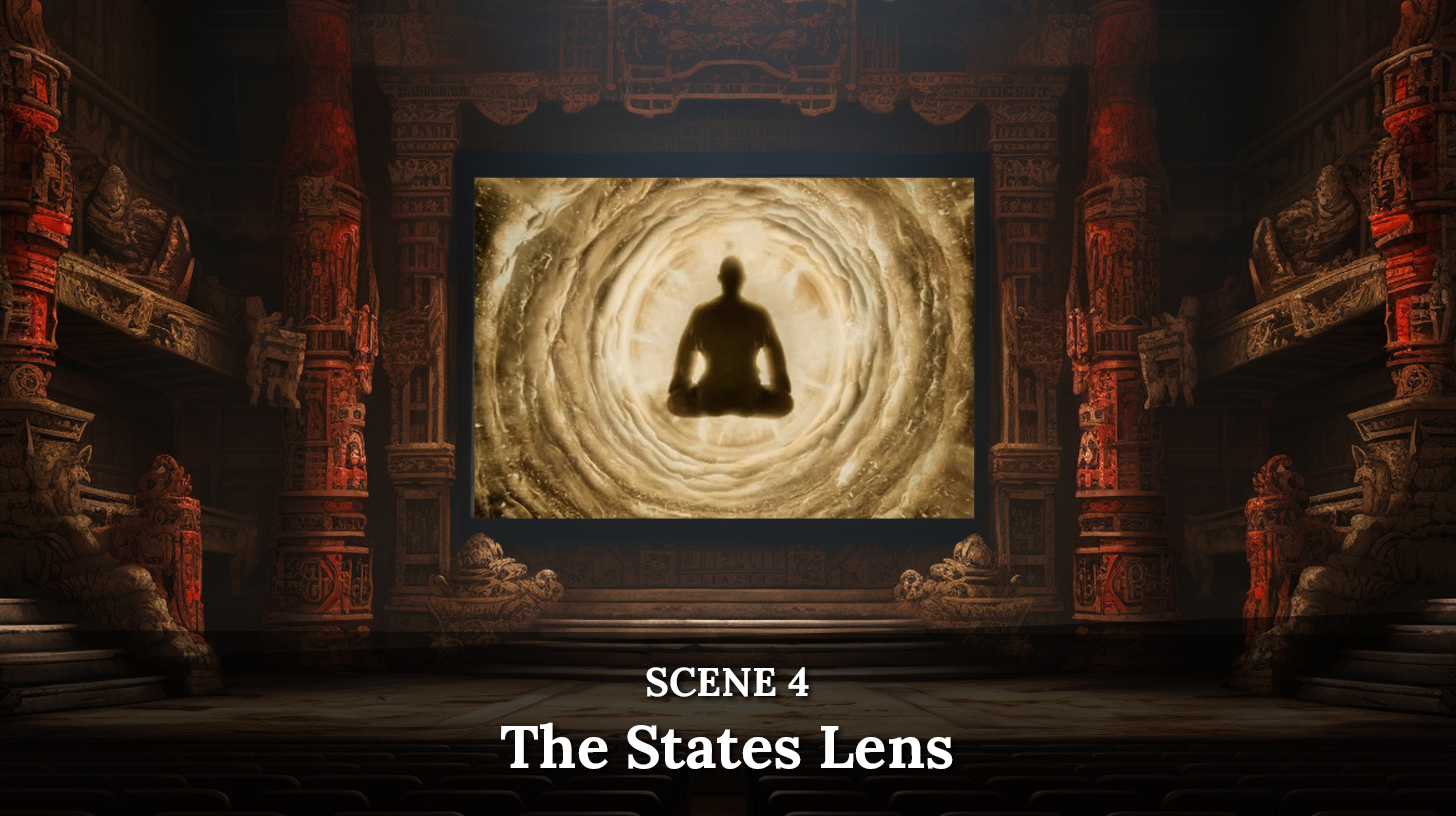 |
 |
 |
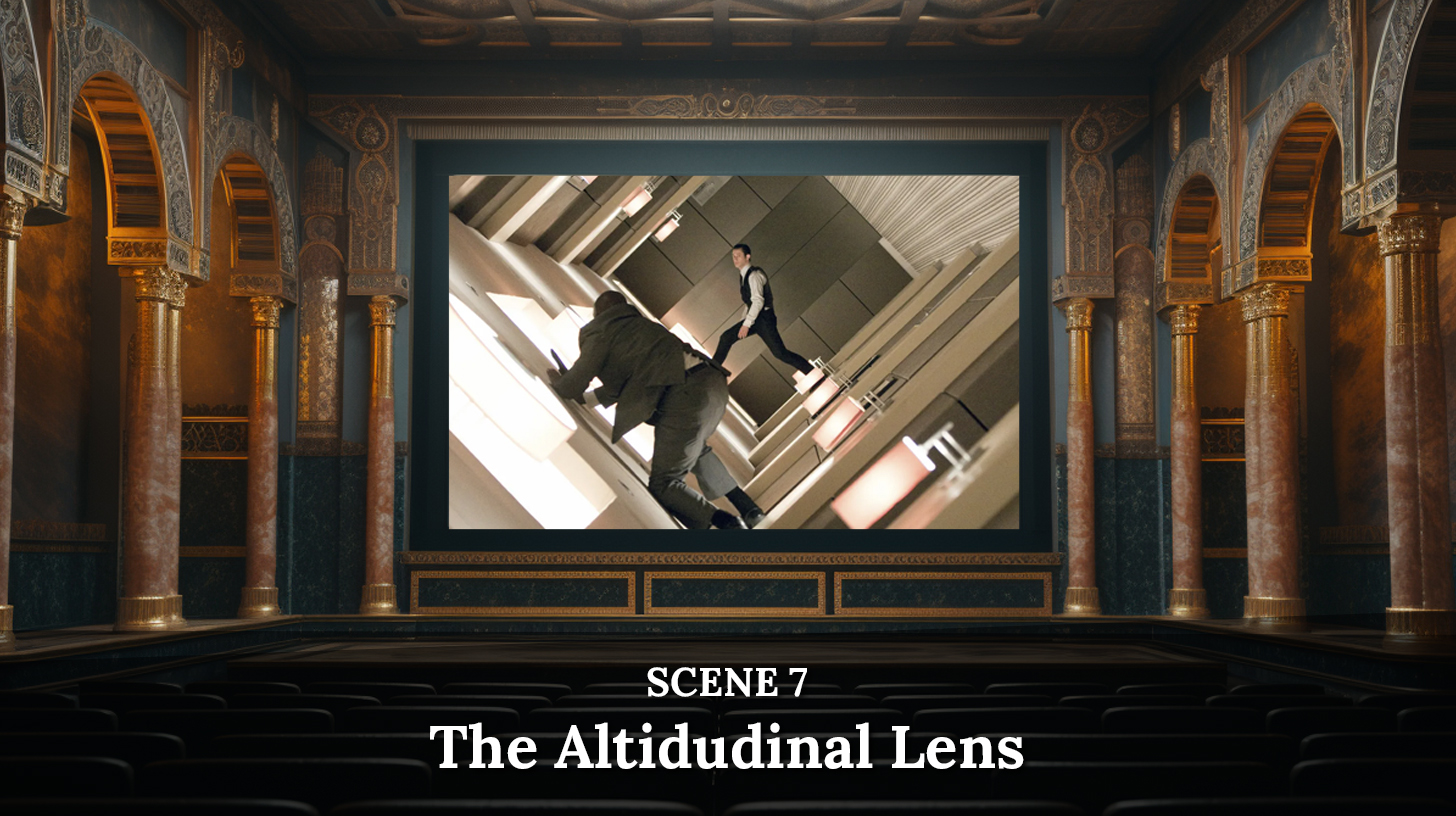 |
 |
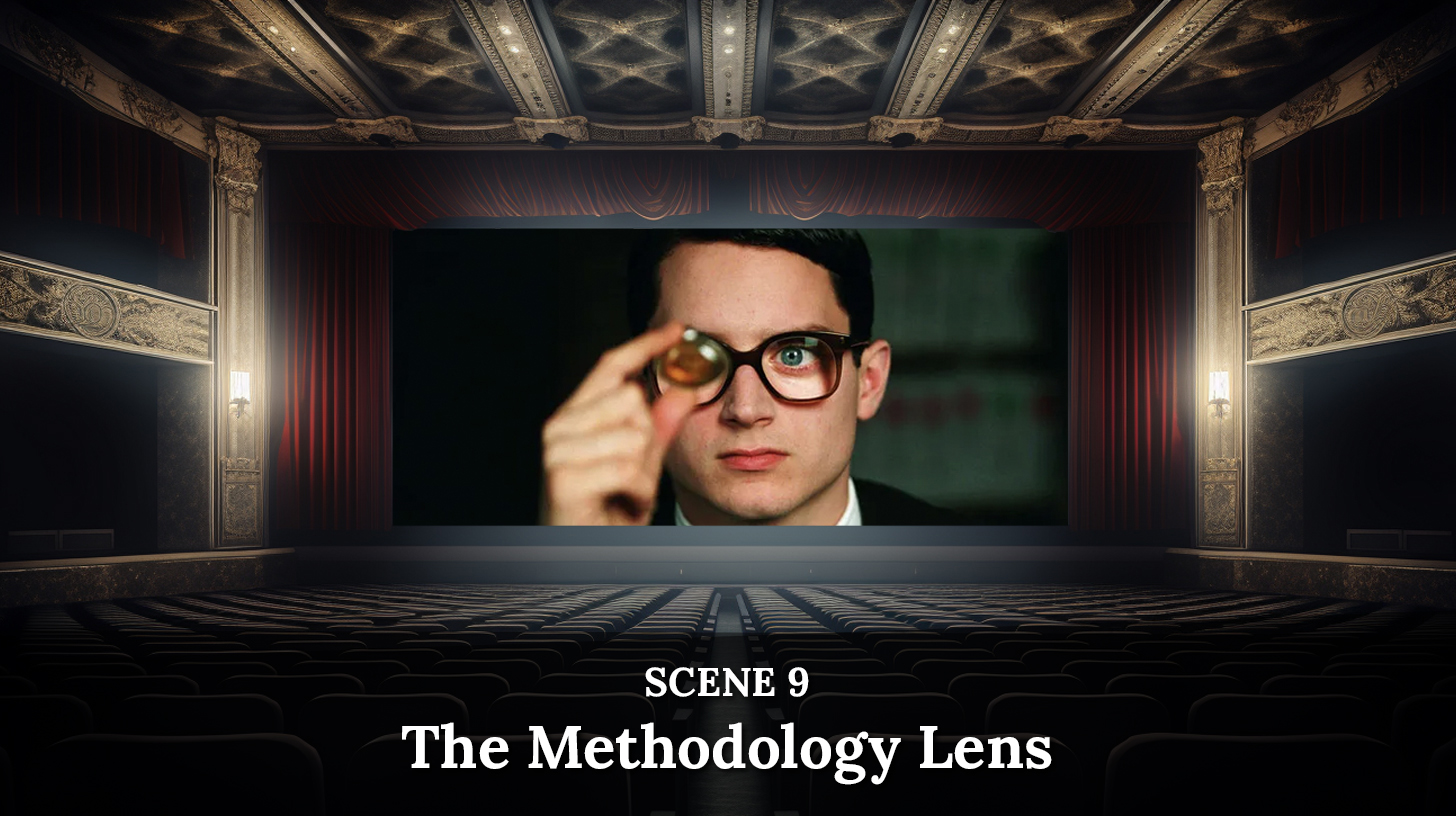 |
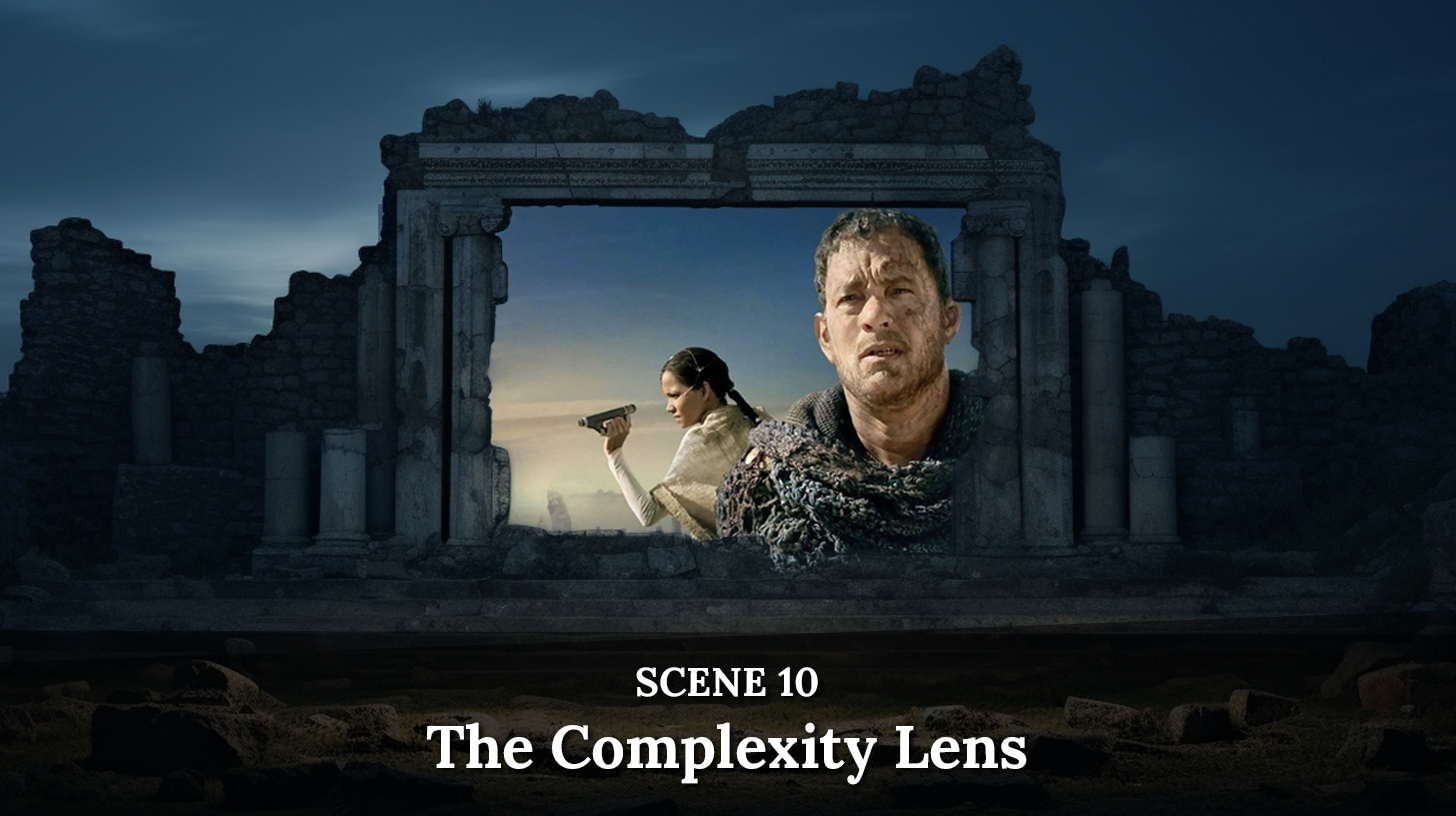 |
 |
|
Related Media
Toward an Integral Cinema
Mark Allan Kaplan
Defining characteristics of what may constitute an integral cinematic work are mapped out and developed into a set of evaluation criteria using the works of Dulac, Gebser, and Wilber. A test of these evaluation criteria with the viewing of several motion pictures is summarized; the results suggest that several past and recent films demonstrate qualities that could be said to constitute an integral cinematic work.
Integral Cinema Studio: A Comprehensive Guide to the Cinematic Experience
Mark Allan Kaplan and Ken Wilber
Mark Allan Kaplan has been curating a groundbreaking integral project, something he calls the Integral Cinema Studio. In this remarkable exploration, Mark and Ken walk us through all of the main elements of Integral theory, using some of our favorite movies to illustrate the basics of the Integral approach while noting how each of these elements has shaped the cinema experience since the invention of film itself.
About Mark Kaplan
Mark Allan Kaplan, Ph.D. is a Transdisciplinary Artist, Filmmaker, Researcher, Consultant, Educator and Media Psychologist focusing on Integral, Transpersonal, and Transformative approaches to Art, Media, and Spirituality. Mark is currently exploring various applications of Integral Theory, including the research and development of an Integral approach to cinematic media theory and practice.

